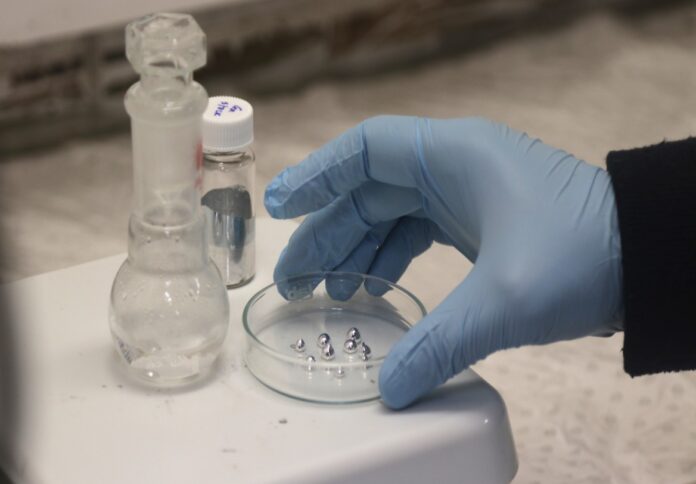
Researchers have unveiled a novel technique that uses liquid metals that may potentially revolutionise the environmental impact of chemical manufacturing.
According to research data, chemical production currently contributes to 10 to 15 per cent of global greenhouse gas emissions, with more than 10 per cent of the world’s energy consumed by chemical factories.
The study, led by Professor Kourosh Kalantar-Zadeh and Dr Junma Tang from the University of Sydney, utilises liquid metals, specifically dissolving tin and nickel, giving them unique mobility.
These liquid metals migrate to the surface and interact with input molecules, such as canola oil. This interaction leads to the rotation, fragmentation, and reassembly of molecules, resulting in smaller organic chains, including propylene – an essential high-energy fuel for various industries.
Professor Kalantar-Zadeh highlighted the potential of this method to significantly reduce energy consumption and make chemical reactions more environmentally friendly.
“It’s expected that the chemical sector will account for more than 20 per cent of emissions by 2050. Chemical manufacturing is less visible than other sectors— a paradigm shift is vital,” he explained.
According to the research, liquid metals, with their more randomly arranged atoms and greater freedom of movement compared to solids, enable easier contact with and participation in chemical reactions.
This, in theory, allowed them to catalyse chemicals at much lower temperatures, requiring significantly less energy.
In particular, the research team dissolved high-melting-point nickel and tin in a gallium-based liquid metal with a melting point of only 30 degrees centigrade.
“By dissolving nickel in liquid gallium, we gained access to liquid nickel at very low temperatures – acting as a ‘super’ catalyst. In comparison solid nickel’s melting point is 1455 degrees centigrade. The same effect, to a lesser degree, is also experienced for tin metal in liquid gallium,” Dr Tang said.
This innovative approach provides access to liquid nickel at very low temperatures, acting as a ‘super’ catalyst.
The metals were dispersed in liquid metal solvents at the atomic level, creating single-atom catalysts with the highest surface area accessibility for catalysis.
The researchers believe their formula can be adapted for various chemical reactions by mixing metals using low-temperature processes.
However, they caution against attempting this at home, noting that it requires such low temperatures that it could theoretically be done on a gas cooktop in a controlled environment.




















